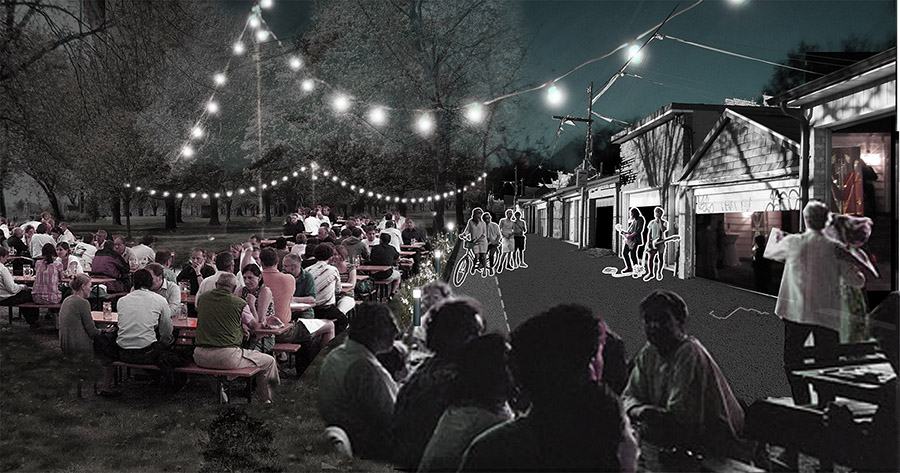
The abandoned, the derelict and the unseen can be an intriguing concept, especially when exploring spaces in the city. For most Torontonians, laneways are places that stir up such curiosity yet can easily be found right in our backyards. The network of Toronto’s back alleys are part of most people’s experience growing up in the city’s core and are a quintessential characteristic of Toronto’s gritty urban fabric.
But how do our laneways relate to some of Toronto’s biggest issues? Well — right now, they don’t.
Downtown Toronto is undergoing dramatic change and rapidly growing at a rate four times faster than the rest of the city. With this new growth, there is an obvious need for more investment in public and park space, transit and affordable housing. Promoting short-term-living and encouraging a dropping supply of affordable and diverse housing options, Toronto’s condominium boom is not offering solutions.
CONNECTING TORONTO’S LANEWAYS
With this lack of affordability in the city centre, Toronto’s demographics are also changing and we are seeing an increase in class polarization with a dwindling middle class. With the opportunity to tackle some of our biggest urban issues, our beloved laneways have potential to provide some relief — if we’re willing to be open to them. Can we begin to reconsider the use of these extensive back-end networks as solutions for city movement, public space and affordable housing?
Over the course of several weeks, we’ll explore the past of Toronto’s alleys and the hypothetical future of laneways on various scales. On a city-wide scale, the benefits of connecting specific north and south lanes to form a continuous route will be highlighted, as well as the diversity within laneway typologies. Focusing on the neighbourhood scale, we’ll also explore how these typologies can undergo change through site specific interventions.
Through re-envisioning what laneways can become with a little imagination, it is clear the immense opportunity these alleys can provide for our growing city

